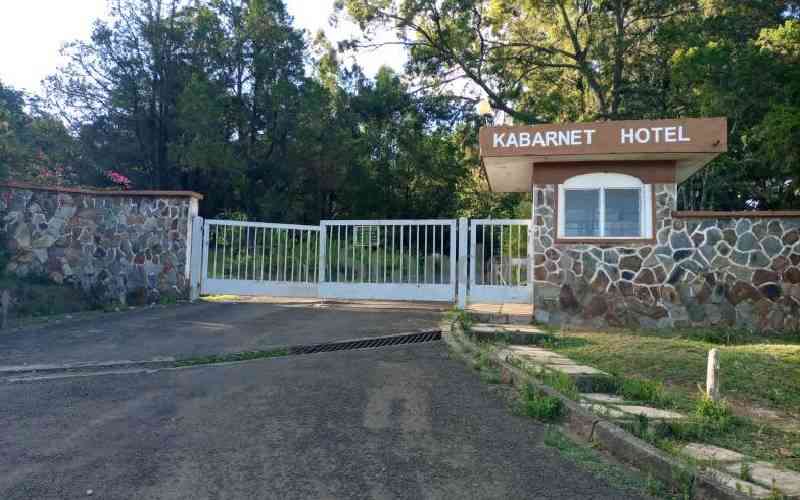Privatisation is here with us again. This time it is to privatise sugar factories in Western Kenya, which are indebted to the tune of Sh59 billion.
In 1996, when the first major privatisation exercise was carried out, that of Kenya Airways, big monies were involved. At least Sh6 billion debt that the government had to write off from the books of account of Kenya Airways was indeed a lot of money; much more than what it would be today.
But Kenya Airways did very well during the first 10 years because management and leadership were focused, determined and visionary. The story since then has been different, and we have already told a bit of it in this column. Kenya Airways is currently a basket case. Privatisation may not always be the panacea to our problems of economic backwardness and non-performing investments.
But back to the sugar industry. On the Western side of Kenya is the sugar belts where Chemelil, Muhoroni, Miwani, Nzoia and Sony mills are located close to 6 million people depend on the sugar economy. Up to the late 1980s, the sugar economy in this area did very well: one could see it in the vibrancy of the upcoming urban growth.
From the early 1990s onwards, farmers have had painful tales to tell regarding the predicament of growing sugar cane: expensive farm inputs, poor infrastructure, delayed harvests, authoritarian factory managers, lack of voice in the affairs of the sugar economy and farm gate prices which are not commensurate with the costs of production by the farmer. The whole of the sugar belts in Kisumu, Nandi, Migori, Homa Bay, Siaya, Bungoma, Kakamega and Busia counties present fortunes that once were but are no longer there.
One cannot really blame the farmers for the misfortunes in the sugar industry that have led to the underdevelopment in this sector. The blame lies squarely on the State: the owner of the factories. Take the case on Nzoia Sugar Mills for example. In 1994, when I was chairman of the Public Investments Committee in the National Assembly, we investigated the case of factory expansion in Nzoia (Phase Two) which had gone completely wrong.
The factory management had made an arrangement with an American company, Arkel International, to expand production capacity and supply new equipment and machinery like tractors, lorries and turbines. Tractors supplied were too big to run on roads and pass through bridges collecting cane and ploughing the fields: they were white elephants from the word go.
Phase II expansion was started but never completed due to irrational variation orders and calculated disagreements between the factory management and the Arkel group. When government took Arkel to some international court somewhere in Europe, former executives of Nzoia Sugar Mills turned against their own government to testify in court in defence of Arkel. The government lost the case and had to pay Arkel $5 million.
The total debt owed by all the sugar companies is Sh59 billion as stated above. Nzoia alone is indebted to the tune of Sh28 billion. In other words close to 50 per cent of the debt is swallowed up by Nzoia dating back to the Arkel days.
And who is responsible for this? The responsibility lies squarely with the Government, which ran these factories, made poor investment decisions, tolerated and/or encouraged corruption and rent seeking, and finally exploited the labour of farmers for years and years with gross impunity.
A further analysis of this debt reveals that the Government has, over the years, invested Sh35 billion in these factories without getting much in return. One fails to understand why this is so because farmers had consistently delivered their cane to the factories without getting any spectacular increase in farm gate prices. So where did the debt come from? Read the Nzoia story with Arkel: similar stories exist in all the other factories, if only in smaller scales than that of Nzoia. The Kenya Sugar Board also claims some Sh6 billion owed to it by the factories. This, to me, is a most preposterous claim. Where does the Kenya Sugar Board get its money from in the first place?
From the farmers who grow the sugar, deliver it for processing in the factories and then get back a small portion of the value of their labour when the sugar is sold.
A purely management entity called the KSB is assigned some portion of the value of the marketed sugar – imported or locally produced – which it then “lends” to the factories. The farmer, as it were, is a passive entity in all these transactions, although the Board, as it were, claims to have “farmers representatives” on board.
The Board, if it is a real farmers’ representative, should handle farmers’ money responsibly and not lend it irresponsibly to factories that do not perform.
In this process of privatisation, farmers should not in any way be penalised for debts that are purely the responsibility of the State.
Stay informed. Subscribe to our newsletter
Now that the State is getting out of the sugar economy through privatisation, let it take off with all its parafanelia: debts, old machines, corrupt and inefficient managers and the works. Let us have a new social contract which will not be lopsided in the interest of the Government and the factories: let this social contract begin with the farmer. And this is how we shall do it.
Critical to sugar production is the land: this belongs to the counties under the new constitutional dispensation.
Next is the farming of sugar or agriculture: this is another county function. What is then needed is the machines to crash the sugarcane into various products: here we welcome all who want to share holders in the enterprise. Since the Government is an interested party, it should enter into negotiations with the county government and farmers on how other partner(s) will join this venture.
But let debt not be an incumbrance: this is the entire responsibility of the State and its servants who contracted it under all kinds of dubious circumstances.
A new sugar production and manufacturing culture must then be put in place. It will involve using high yielding seed varieties, irrigation based farming, enclosure farming and light rail transportation of cane to the factory.
The small scale sugar farmer will no longer farm alone: the farms need to be cultivated collectively in zones and harvested as such.
The lone ranger 10-acre farmer is inefficient, cumbersome and low productivity oriented. It must be abolished. The farmer needs to be prepared to be more than a “proletariat working at home”– which is what his counterpart is in the more mechanised Gezira sugar scheme in Sudan – to rationalise farming practices, capitalise on economies of scale and get higher and more regular returns for his labour.
 The Standard Group Plc is a
multi-media organization with investments in media platforms spanning newspaper
print operations, television, radio broadcasting, digital and online services. The
Standard Group is recognized as a leading multi-media house in Kenya with a key
influence in matters of national and international interest.
The Standard Group Plc is a
multi-media organization with investments in media platforms spanning newspaper
print operations, television, radio broadcasting, digital and online services. The
Standard Group is recognized as a leading multi-media house in Kenya with a key
influence in matters of national and international interest.
 The Standard Group Plc is a
multi-media organization with investments in media platforms spanning newspaper
print operations, television, radio broadcasting, digital and online services. The
Standard Group is recognized as a leading multi-media house in Kenya with a key
influence in matters of national and international interest.
The Standard Group Plc is a
multi-media organization with investments in media platforms spanning newspaper
print operations, television, radio broadcasting, digital and online services. The
Standard Group is recognized as a leading multi-media house in Kenya with a key
influence in matters of national and international interest.









